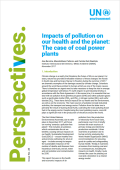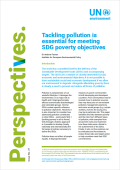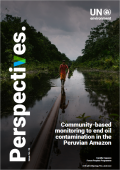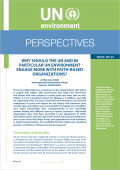


Severe pollution incidents have provided some of the most visually arresting images of recent armed conflicts. Oil fires and spills, bomb-damaged and looted industrial facilities, abandoned military material and munitions, rubble and demolition waste – all are associated with contemporary conflicts, and all can threaten ecosystems and human health. But these obvious, and often serious, sources of pollution rarely tell the whole story. The relationship between armed conflict and pollution – or what we view as the toxic remnants of war – can be complex, and its legacy can last for decades after conflicts end. While it is a problem that has received increasing attention in recent years, too little is currently done to minimize the generation of pollutants in conflict and military activities, and to examine and address their impact on human health and the environment.


There has traditionally been a reluctance in the United Nations (UN) system to engage with religion. With governments that range from theocracies and nations with state religions to secular states and those that are antireligion, it is not a propitious domain for diplomacy. In addition, especially for organizations that are science-based like UN Environment, the historical antagonism of science and religion has not helped, with emotional views on both sides, and religion seen as unscientific if not dangerous.
A healthier view might acknowledge their complementarity as two knowledge systems dealing with different aspects of human experience. Faith-based organizations have long been accredited to the Department of Public Information and the Economic and Social Council, but they have simply been seen as part of the NGO Major Group, and appreciated for their usefulness in project implementation. The possibility that they might have something special to contribute to UN processes has been ignored.
